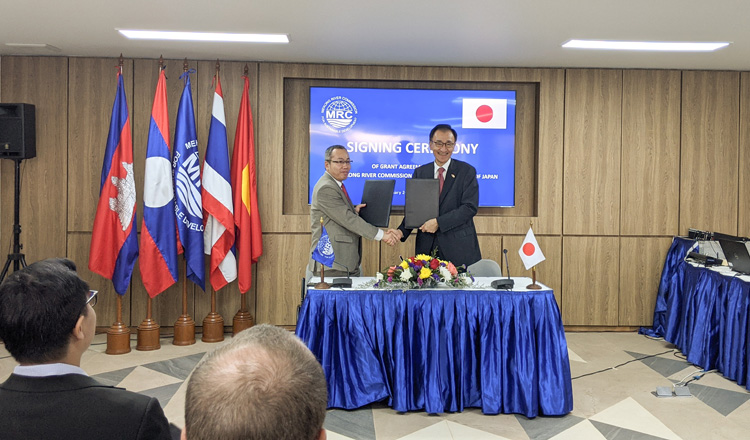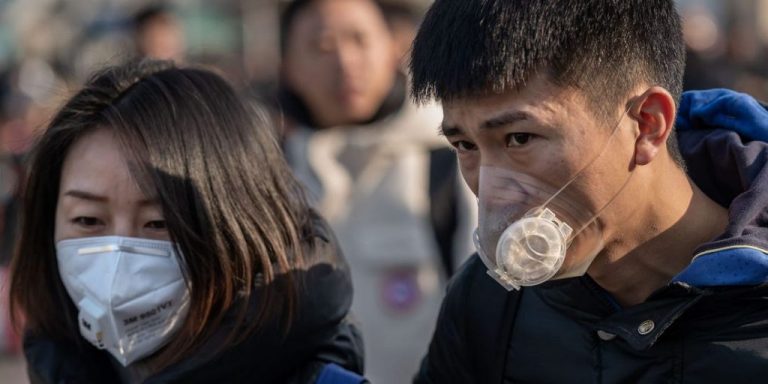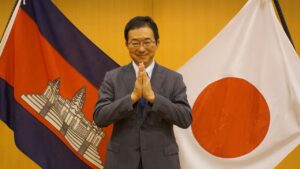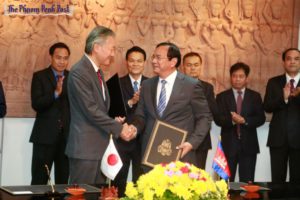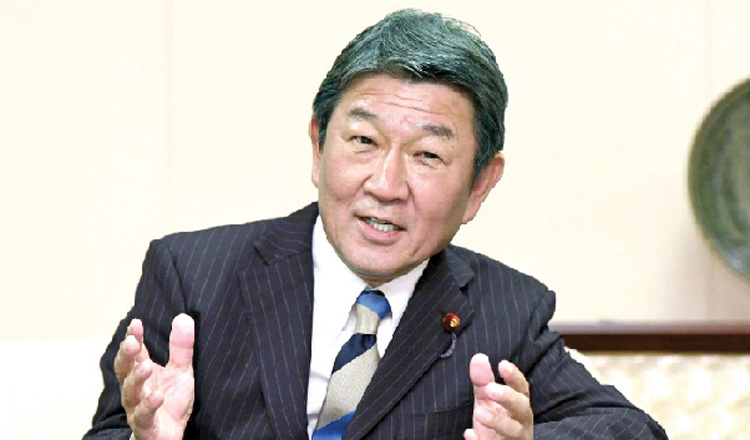Japanese gov’t helps fund Mekong forecasting system
The Japanese government granted $2.9 million to the Mekong River Commission (MRC) to help implement its strategic plan to promote responsible development in the region.
“The new funding gets right to the heart of the challenges our region faces and will be facing in the future,” said An Pich Hatda, MRC Secretariat chief executive officer.
The new strategic plan, set to run until 2024, will help the MRC and its member countries monitor and assess the river’s environment to help adapt to prevailing changes.
Japan donated $3.9 million to the MRC last year to bolster the MRC’s flood and drought forecasting system.
“This additional funding should enable the MRC to provide more accurate and efficient river monitoring and forecasting services to the public and its member countries,” Japanese Ambassador to Laos Keizo Takewaka said.
The Mekong River and its tributaries support nearly 70 million people living in the Lower Mekong Basin (LMB) in Laos, Cambodia and Vietnam.
On Feb 22, the MRC announced that water had increased slightly over a seven-day period after alarms were raised that the Jinghong hydrological station was adversely affecting water levels, resulting in stretches of the Mekong River to turn brown in colour.
The commission said that the outflow at the Jinghong station had increased from 786 square cubic metres to 1,020 by Feb 22.
The Chinese Ministry of Water Resources, however, stated that outflow at the hydro station has consistently remained at no more than 1,000 cubic metres square since January.
The Mekong is the longest river in Southeast Asia, the 7th longest in Asia, and the 12th longest in the world. It has a length of about 2,700 miles (4,350 km). From its headwaters in China’s southeastern Qinghai province, it flows through the eastern part of the Tibet Autonomous Region and Yunnan province, after which it forms part of the international border between Myanmar and Laos, as well as between Laos and Thailand. The river then flows through Laos, Cambodia, and Vietnam before draining into the South China Sea south of Ho Chi Minh City.
The river is a life-source to the 60 million people that live within the lower Mekong basin. Aquatic resources such as fish and molluscs account for 80 percent percent of the protein in basin’s household diets, while the fisheries of the Mekong are estimated to be worth more than $2 billion per year. Representing almost 2 percent of the combined (freshwater and marine) global fish catch by weight, it is the largest inland fishery in the world.
The river system is home to a great cultural diversity, with more than 95 different ethnic groups living in the Mekong basin. In the lower basin, Khmer, Lao, Thai and Vietnamese people have depended upon the Mekong’s resources for thousands of years and the river forms an integral part of local culture. Khmer Times

